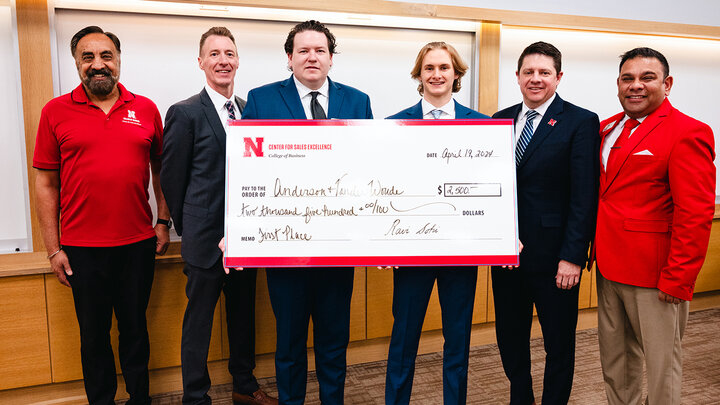Although cash flow hedge derivative transactions have become common practice for corporations wanting to mitigate risk, adjusting financial statements to account for them often confuses investors. Dr. Jimmy Downes, assistant professor of accountancy, published an article recently to help provide a full picture of financial statement adjustments needed when considering hedge derivatives.
“Companies use cash flow hedges to protect themselves from changes in commodity prices, foreign exchange rates and interest rates. What we look at in my recent paper is how debt investors understand the accounting for cash flow hedges,” said Downes. “The accounting for those transactions is difficult to understand. Prior literature, including one of my own papers, documents that investors and equity analysts don’t understand the accounting for these transactions.”
Downes recent paper, “Do Debt Investors Adjust Financial Statement Ratios when Financial Statements Fail to Reflect Economic Substance? Evidence from Cash Flow Hedges,” published in Contemporary Accounting Research, examines how investors can adjust financial statement ratios to better reflect economic transactions firms enter.
“We show debt investors make the necessary adjustments to the financial statements and price those adjustments into debt offerings. Prior to this paper we didn’t have a full understanding of what adjustments need to be made to the financial statements to interpret these transactions. We show debt investors do make these adjustments for the hedge derivative transactions, whereas equity investors do not make the necessary adjustments,” he said.
The appeal to Downes’ research in the academic world derives from providing a more complete picture of how to adjust financial statements for cash flow hedge derivative transactions.
“When we started this research, we didn’t know for sure whether debt investors would make these adjustments. We had some inkling they might because prior literature has shown debt investors are usually more sophisticated compared to equity investors, but the fact we find there’s this subset of investors who understands this is the interesting part we’ve highlighted,” Downes said.
The measures Downes and his co-authors used to analyze debt investors adjustments include the market rate of interest on the first debt issuance in the year following the disclosure of unrealized cash flow hedge gains/losses, and the credit rating assigned to the same debt issuance. The paper suggests if investors appear to adjust for effects of cash flow hedge gains/losses on the balance sheet, a positive relation between gains/losses and the cost of debt should be expected.
Downes originally gained interest in studying derivative transactions after exposure to such transactions as an auditor. His interest expanded in his Ph.D. program, and he has been working in this research track the past 10 years.
“Jimmy’s research has helped us understand how our tax system incentivizes firms to use and invest their profits,” said Dr. Aaron Crabtree, director of the School of Accountancy and KPMG Faculty Fellow. “His research helps inform students and regulators on the impacts of financial standards and tax regulations. It also helps our school impact accounting research in a field that is highly complex, yet critical to the understanding of modern business practices.”
Downes' co-authors for the paper included Dr. John Campbell, University of Georgia; Dr. Jenna D’Adduzio, University of British Columbia; and Dr. Steven Utke, University of Connecticut.
To learn more about the School of Accountancy, visit: https://business.unl.edu/accounting.




